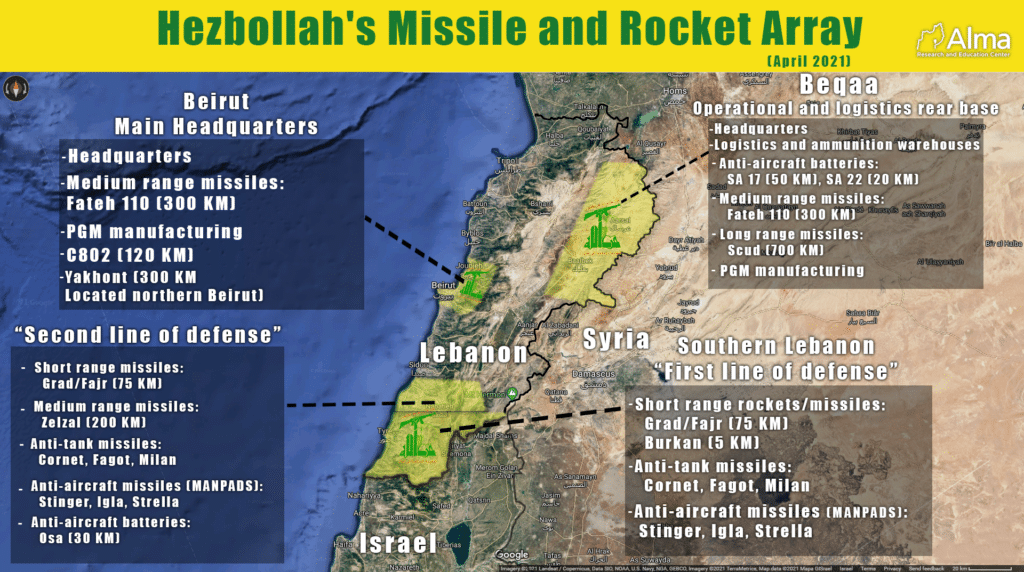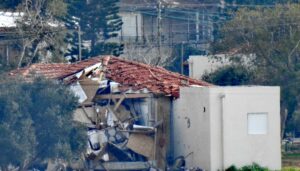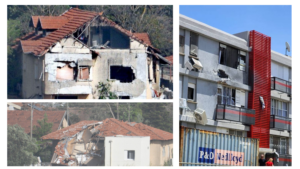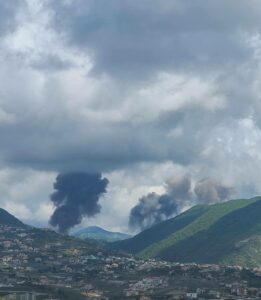The Jihad Council is responsible for all of Hezbollah’s military and security activities and is subordinate to the Shura Council. The Jihad Council is actually the general staff of Hezbollah’s army. The Jihad Council is composed mostly of senior military officials, and its role is to determine Hezbollah’s military policy in routine and emergency situations, supervise military activities, coordinate them, and decide on new activities, both ongoing and special.
The Jihad Council is currently under Nasrallah’s direct supervision. Imad Mughniyeh was in charge of the council until his death (February 2008) and Mustafa Badr al-Din replaced him until his own death (May 2016).
Because it is in charge of the military, the Jihad Council works in close collaboration with the Iranians, and it is likely that an Iranian representative may occasionally attend its meetings and deliberations. Most likely the commander of the IRGC’s Qods Force (now Ismail Qaani) will attend these meetings.
According to our information, these are apparently members of Hezbollah’s Jihad Council:
- Hashem Safi al-Din – Head of the Executive Council (see below).
- Ibrahim Aqeel – also known as “Hajj Tahsin” / “Al-Haj Abdul Khader”, who may be Hezbollah’s de facto military chief.
- Khuder Yusef Nader – “Izz a-Din” – Head of the Security Unit.
- Fa’ad Shakar, Nasrallah’s military advisor.
- Ali Karki – responsible for Hezbollah’s military activity in southern Lebanon (a dominant figure in the context of the war today, see below).
- Mohammed Haidar – Former Member of Parliament. His current role in Hezbollah’s is unclear. He may serve as an advisor to the Council.
- Talal Hamia – “Abu Jaafar”. Serves as commander of Unit 910 – Hezbollah’s foreign operations and terrorist units. He may also serve as Hezbollah’s chief intelligence officer.
Hashem Safi al-Din, head of Hezbollah’s Executive Council, also serves as a member of the Jihad Council. In addition to being Hezbollah’s second most important person, after Nasrallah, and being marked as its potential successor, the Executive Council, for which Safi al-Din is responsible, coordinates all civilian bodies that replace Lebanese state bodies and in fact serve as a support base for Hezbollah’s military infrastructure.
The civilian bodies of the Executive Council support and assist in their ongoing activities the military activity of the Jihad Council and its subordinate military units. There is no separation in Hezbollah between civilian activity and military activity, and the ideology of the “resistance society” leads Hezbollah in everything it does, which is particularly evident in the implementation of the “human shield” tactic.
This principle of non-separation and human shield tactics were copied by Iran in other arenas of activity in the Middle East, where additional proxies of the Shiite axis operate, with an emphasis on Hamas and the PIJ in the Gaza Strip. These days, as the IDF acts to destroy Hamas infrastructure in the Gaza Strip, we are witnessing and being exposed more and more to such examples from the Gaza Strip, foremost among them is the use of hospitals, ambulances, mosques, schools, residential buildings, etc. as human shields for military activity.
The main hospital in the Gaza Strip – Shifa – is a prime example.
Ali Karki is another significant figure in the Jihad Council, especially today. In his capacity as head of Hezbollah’s southern sector, Karki is in effect the direct commander of all the geographic units operating near the border with Israel. Under its responsibility, Hezbollah carries out most of its military operations against Israel from the southern Lebanon sector today. An operation carried out by a secret or professional unit is also coordinated with Karaki, by virtue of his being in charge of the sector.
As of October 7, and as of this writing, Hezbollah has carried out more than 200 operations against Israel from southern Lebanon. In fact, every action such as anti-tank fire, mortar or rocket fire, sniping, launching UAVs and drones, infiltrations, etc., was directly authorized by Ali Karki or at least coordinated with him.
Following are details of the main units operating under Hezbollah’s general staff – the Jihad Council. The breakdown is divided into headquarters, security, clandestine units, commando units, professional-military units, geographic units and designated units in Syria:

Main Headquarters Units:
Intelligence Headquarters (responsible for intelligence collection, processing and research).
Combat Doctrine Headquarters (responsibility for promoting and planning combat doctrines and strategic plans).
The Training and Instruction Headquarters (responsibility for planning, monitoring and including training among the various units).
Operations Headquarters (responsibility for the war rooms and front command rooms).
The Logistics Headquarters (also called the “Preparation and Assistance” Headquarters. Responsibility for the overall logistics, equipment and supply vis-à-vis all units).
Security Unit:
Unit 900 – Counterterrorism espionage and subversion (headed by Khuder Yusuf Nader – “Izz a-Din”. The unit is responsible for exposing espionage, investigations, security, exposing leaks, moral offenses, etc.).
Secret Units:
Unit 133 (apparently headed by Hajj Khalil Harb-Abu Mustafa). The unit is responsible for carrying out operational activities inside Israel through Palestinian and Israeli Arab collaborators: drug and weapons smuggling, intelligence gathering, terrorist activity).
Unit 910 (headed by Talal Hamia-“Abu Jaafar”). The unit is responsible for carrying out operational activities around the world, with an emphasis on building terrorist infrastructures to carry out attacks against Israeli and Western targets).
Unit 3800 (responsible for professional support and military training for the Houthis in Yemen and the Shiite militias in Syria and Iraq).
Unit 4400 (headed by Muhammad Ja’far Katzir – “Haj Fadi”). The unit is responsible for arms transfers to Syria and Lebanon in cooperation with Quds Force Unit 190).
Unit 1600 (also called “Al Hadi” – the chemical unit: explosive laboratories / partnership in the production of missiles / partnership in the production of Captagon).
Unit 121 (“Death Squad” – responsible for carrying out the assassinations under Nasrallah’s direct orders).
Unit 3300 (responsible for recruiting and training non-Shiite armed groups in Lebanon).
Special commando/infantry units:
The Radwan unit (Hezbollah’s elite commando unit, possibly under the command of Haitham Ali Tabatabai. Its main objective is to carry out a raid and conquer territories in the Israeli Galilee region. It operates independently and has independent capabilities such as anti-tank, light anti-aircraft – shoulder-fired missiles, engineering, medicine, logistics, intelligence, etc. It has about 2500 operatives).
The Al-Abbas unit (apparently an infantry unit).
Professional military units:
The missile unit (responsible for operating the ballistic missiles used by Hezbollah. The main array is Fateh-110 missiles with ranges of up to 350 kilometers. Some of these missiles were upgraded as part of the precision missile project).
Unit 127 – The Air Unit (research, development and operation of UAVs of all types: intelligence/suicide bombers/attackers).
The naval unit (responsible for naval warfare, operates anti-ship missiles / small submarines / boats / commandos / naval mines).
The air defense unit (mainly responsible for operating air defense batteries such as SA6 and Osa). It should be noted that Hezbollah probably also has SA17 and SA22 batteries transferred to it from the Syrian army).
The tank and armored unit (established during the civil war in Syria, when Hezbollah received armored vehicles from the Syrian Army and weapons seized from ISIS).
Electronic Warfare Unit (a relatively new unit, responsible for electronic warfare and offensive and defensive cyber warfare).
Military Communications Unit (responsible for the operation and maintenance of the military communications infrastructure).
The combat information unit (responsible for documenting and publishing Hezbollah’s military operations).
The geographical units in Lebanon:
The “First Line of Defense and the Second Line of Defense” (South Lebanon: between the border with Israel and Sidon):
Nasser Unit (responsible for the western area between the border with Israel and the Litani River – “the first defense zone”).
Aziz Unit (responsible for the eastern area, from the border with Israel – Shebaa Farms to the geographical border with the Bekaa Valley to the north).
Badr unit (responsible for the area between the Litani River and Sidon – “the second defense zone”).
The geographical units operating in southern Lebanon apparently operate under a single headquarters under the command of Ali Karki. They have independent capabilities of combat engineering, rocket operation (mainly short range), anti-tank, mortars, light anti-aircraft (shoulder-fired missiles), medicine (these are operatives of the Islamic Health Organization, that operates under the Executive Council, which are attached to these units), logistics and communications.
Beirut / Bekaa:
Haidar Unit (responsibility for the Bekaa Valley, with an emphasis on the Baalbek and Al-Hermel areas).
Beirut / Dahiya unit (responsibility for Beirut / Dahiya and its surroundings).
Syria:
In addition to operatives of Hezbollah’s organic, professional/thematic units that come from Lebanon and operate regularly in Syria according to operational needs, Hezbollah has established two dedicated units in southern Syria, which operate near the border with Israel.
The first is the Southern Command Unit (commanded by Munir Ali Na’im, “Hajj Hashem”). Its operatives are Lebanese Hezbollah operatives. Its main role is to create an operational infrastructure for Hezbollah’s activity in southern Syria and to work in cooperation with Syrian army units in southern Syria and their professional mentoring.
The second is the Golan File Unit (commanded by Ali Musa Abbas Daqduq – “Abu Hussein Sajed”). The unit is responsible for operating terrorist cells based on local residents living in villages in southern Syria near the border with Israel. These two units, together with Unit 840 of the Quds Force, local militias operating in cooperation with Hezbollah and Shiite militias operating partially in the Golan Heights, constitute a clear and present threat and danger to Israel from the Syrian border. This threat are displayed through raids, planting IEDs, firing rockets and mortars, anti-tank fire, sniping and the operation of UAVs / explosive drones.







